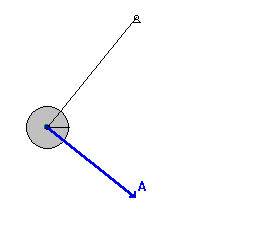Mechanical energy facts for kids
In physics, mechanical energy is the energy an object has because of its movement or its position. It's like the total power an object has from being in motion or being ready to move. This energy is made up of two main types: potential energy and kinetic energy.
When you use mechanical energy to do something, like throwing a ball or lifting a box, we say you are doing "mechanical work." Both mechanical energy and mechanical work are measured using the same units as other forms of energy. Think of mechanical energy as the amount of power an object has, and mechanical work as the amount of power it gains or loses.
Contents
What is Mechanical Energy?
Mechanical energy is the sum of an object's kinetic and potential energy.
- Kinetic energy is the energy an object has because it is moving. A fast-moving car or a running person has kinetic energy. The faster an object moves, the more kinetic energy it has.
- Potential energy is stored energy due to an object's position or state. For example, a ball held high in the air has gravitational potential energy. A stretched rubber band also has potential energy, ready to snap back.
So, mechanical energy is the total of these two energies. If you lift a book, you give it potential energy. When you drop it, that potential energy turns into kinetic energy as it falls.
How Mechanical Work is Done
Mechanical work happens when mechanical energy is moved from one place to another. Imagine pushing a toy car. You are doing mechanical work on the car, giving it kinetic energy. When you lift a heavy backpack, you do mechanical work to give it potential energy.
The amount of mechanical work done is exactly the amount of mechanical energy that has been transferred. This means if you do a lot of work, you transfer a lot of energy.
Conservation of Mechanical Energy
One important idea in physics is the conservation of mechanical energy. This rule says that in certain situations, the total mechanical energy of a system stays the same. It means that energy isn't lost or gained, it just changes form. For example, a roller coaster car at the top of a hill has a lot of potential energy. As it goes down, that potential energy changes into kinetic energy, but the total mechanical energy (potential + kinetic) remains constant if we ignore friction.
However, this rule only applies when mechanical energy isn't changing into other types of energy. For instance, if there's friction, some mechanical energy turns into heat, which is a different form of energy. When this happens, the mechanical energy itself is not conserved.
The bigger rule is the conservation of energy. This principle states that energy can never be created or destroyed. It can only change from one form to another. So, even if mechanical energy changes into heat or light, the total amount of energy in the universe stays the same.
Images for kids
-
An example of a mechanical system: A satellite is orbiting the Earth influenced only by the conservative gravitational force; its mechanical energy is therefore conserved. The satellite's acceleration is represented by the green vector and its velocity is represented by the red vector. If the satellite's orbit is an ellipse the potential energy of the satellite, and its kinetic energy, both vary with time but their sum remains constant.
See also
 In Spanish: Energía mecánica para niños
In Spanish: Energía mecánica para niños




